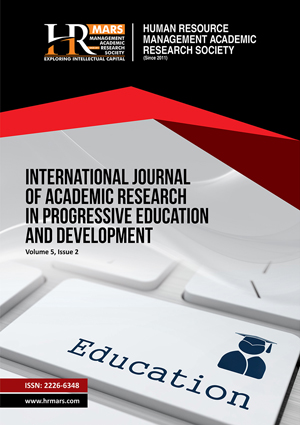
ISSN: 2226-6348
Open access
This study looks at how students view the Quillbot app as a resource for enhancing their academic writing. The main objective is to evaluate how Quillbot's features help students improve their vocabulary, grammar, and writing abilities while also lowering their writing anxiety. 204 university students, ranging in educational level from diploma to post-doctoral, from public and private universities in Abu Dhabi and Al Ain participated in the study. A quantitative survey was used to gather the data, which was then subjected to descriptive statistics, T-tests, and ANOVA analysis. According to the findings, Quillbot was deemed user-friendly by most students, as seen by their mean accessibility score of 4.088. With a mean score of 4.044, Quillbot also assisted in enhancing writing productivity and results while lowering writing anxiety (4.014). Students said Quillbot's organizing and grammar capabilities enhanced the quality of their work (3.936). Perceptions depending on gender, region, or kind of institution did not differ significantly. By showcasing Quillbot’s ability to enhance academic writing abilities and lessen writing anxiety, this study contributes to the conversation on sustainable digital innovation in education. It highlights how the tool promotes efficient and equitable learning, meeting the demands of contemporary education. The results provide insightful information for incorporating AI-powered solutions into environmentally friendly teaching methods.
Al Badi, I. (2015). Academic writing difficulties of ESL learners. In Proceedings of The West-East Institute International Conference 22015, Barcelona, Spain
Ariyanti, A. (2021). Technology-Enhanced Paraphrasing Tool to Improve EFL Students’ Writing Achievement and Enjoyment. Journal of English Language Teaching and Linguistics, 6(3), 715-726.
Chen, L., Chen, P., & Lin, Z. (2020). Artificial intelligence in education: A review. IEEE Access, 8, 75264-75278
Fatimah, N. (2018). Students' Needs for Academic Writing at the English Education Department. English Language Teaching Educational Journal, 1(3), 161-175
Fithriani, R. (2021). The utilization of mobile-assisted gamification for vocabulary learning: Its efficacy and perceived benefits. Computer Assisted Language Learning Electronic Journal (CALL-EJ), 22(3), 146-163
Hair Jr, J. F., Black, W. C., Babin, B. J., & Anderson, R. E. (2014). Multivariate Data Analysis (MVDA). In Pearson Education Limited. https://doi.org/10.1002/9781118895238.ch8
Hair, J. F., Black, W. C., Babin, B. J., & Anderson, R. E. (2009). Multivariate data analysis (7th ed.). Pearson Prentice Hall.
Hu, L., & Bentler, P. M. (1999). Cutoff criteria for fit indexes in covariance structure analysis: Conventional criteria versus new alternatives. Structural Equation Modeling: A Multidisciplinary Journal, 6(1), 1-55.
Huang, J., & Tan, M. (2023). The role of ChatGPT in scientific communication: writing better scientific review articles. American Journal of Cancer Research, 13(4), 1148.
Kaiser, H. F., & Rice, J. (1974). Little jiffy, mark IV. Educational and Psychological Measurement, 34(1), 111-117.
Kurniati, E. Y., & Fithriani, R. (2022). Post-graduate students’ perceptions of Quillbot utilization in English academic writing class. Journal of English Language Teaching and Linguistics, 7(3), 437-451.?
Laila, N., & Daulay, E. (2024). Students Perception Of Using Quillbot To Improve Students Writing Skills. Indonesian EFL Journal, 10(2), 223-232.?
Marzuki, Widiati, U., Rusdin, D., Darwin, & Indrawati, I. (2023). The impact of AI writing tools on the content and organization of students’ writing: EFL teachers’ perspective. Cogent Education, 10(2), 2236469
Meiningsih, S. (2021). Rolling Ball - Learning Cell dalam Pembelajaran untuk Meningkatkan Keterampilan Menulis Bahasa Inggris Siswa. 8(2), 190–196. https://ejournal. undikma.ac.id/index.php/pedagogy/index%0AVol.
Nazari, N., Shabbir, M. S., & Setiawan, R. (2021). Application of Artificial Intelligence powered digital writing assistant in higher education: randomized controlled trial. Heliyon, 7(5), e07014. https://doi.org/10.1016/j.heliyon.2021.e07014
Nurmayanti, N., & Suryadi, S. (2023). The effectiveness of using Quillbot in improving writing for students of English Education Study Program. Jurnal Teknologi Pendidikan: Jurnal Penelitian Dan Pengembangan Pembelajaran, 8(1), 32-40.?
Pallant, J. (2010). SPSS Survival Manual, A Step By Step Guide To Data Analysis Using SPSS (4th editio). Open University Press.
Perkins, M. (2023). Academic Integrity considerations of AI Large Language Models in the post-pandemic era: ChatGPT and beyond. Journal of University Teaching & Learning Practice, 20(2), 07
Raheem, B. R., Anjum, F., & Ghafar, Z. N. (2023). Exploring the profound impact of artificial intelligence applications (Quillbot, Grammarly and ChatGPT) on English academic writing: A Systematic Review. International Journal of Integrative Research (IJIR), 1(10), 599-622.?
Zhang, Z., & Hyland, K. (2018). Student engagement with teacher and automated feedback on L2 writing. Assessing Writing, 36, 90–102
Ahmed, M. N. A., Zaid, N. M., Abdullah, A. H. Bin, & Almurshidi, G. (2025). Assessment of Quillbot Tool in English Education amongst Students in UAE Higher Education. International Journal of Academic Research in Progressive Education and Development, 14(1), 496–508.
Copyright: © 2025 The Author(s)
Published by HRMARS (www.hrmars.com)
This article is published under the Creative Commons Attribution (CC BY 4.0) license. Anyone may reproduce, distribute, translate and create derivative works of this article (for both commercial and non-commercial purposes), subject to full attribution to the original publication and authors. The full terms of this license may be seen at: http://creativecommons.org/licences/by/4.0/legalcode